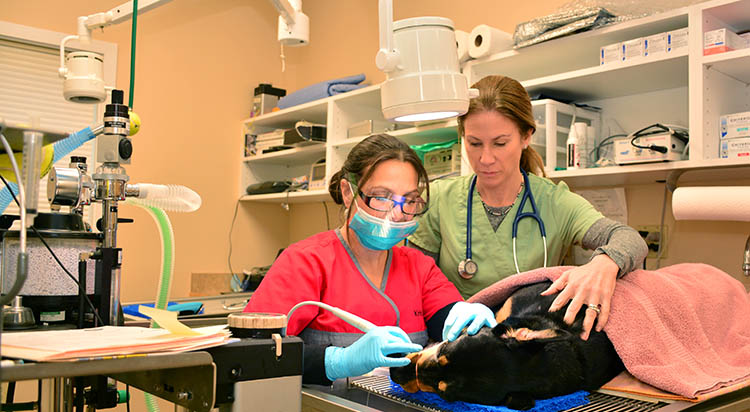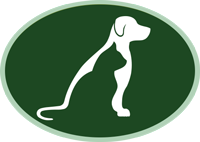Dentistry FAQ’s
Frequently asked questions about your pet’s COHAT (Comprehensive Oral Health Assessment and Treatment)
Why has a Comprehensive Oral Health Assessment and Treatment has been recommended?
Dental care is recommended for pets for the same reason we have dental care. Lifelong care of our teeth prevents gingivitis, periodontal disease and tooth loss. Professional cleaning removes plaque and encrusted tartar above and below the gum line. Restoring your pet’s teeth to a clean and polished condition removes bacteria that cause gum disease. Over half of our patients have dental disease that requires treatment. Infection in the mouth can also cause a wide range of problems with pets’ hearts, lungs, liver and kidneys. Pets should not have bad breath. One milligram of plaque can harbor one trillion bacteria.

What is involved in the dentistry?
After the oral exam, calculus is removed above and below the gum line. Subgingival scaling is performed as indicated, roots are radiographed (example on back of this sheet), teeth are polished, dental problems are documented and a sealant is applied to help prevent plaque buildup.
Why does the estimate have 2 pages?
The first page has the known procedures that we will be performing as part of the thorough oral assessment and cleaning. The second part offers information on the types of procedures your pet may need if advanced disease is present. Some potential problems are not obvious until your pet is under anesthesia and all surfaces of teeth and gums are examined.
What happens after my pet is admitted?
Your pet will have a pre-anesthetic examination and a review of all medical records and blood screening tests so that a customized anesthetic plan can be provided. If questions arise before we proceed you will be contacted. During general anesthesia we will be able to look for signs of periodontal disease, infections, fractures and tooth resorption.
How long does the procedure take?
The time may vary significantly – from 45-60 minutes for an uncomplicated healthy patient to several hours if extensive oral surgery is needed.
Who takes care of my pet while in the clinic?
Your veterinarian and two certified veterinary technicians (veterinary nurse) with the support of other veterinary assistants will manage your pet’s care.
Are anesthesia free dental assessments and cleaning effective?
Anesthesia free cleaning is misleading since no cleaning below the gum line can be performed where plaque and bacteria live. Pets may be fearful and struggling while awake resulting in injuries. Anesthesia free cleanings do not provide any significant health benefit to your pet.
How do you decide if extractions are needed?
Careful assessment of teeth, gums, tooth roots, supporting bone structures with radiographs and measurements of bone loss will determine treatment. Untreated infections can be a source of pain and discomfort. Home care will consist of soft food after oral surgery and medications to control pain.
How is pain control provided?
Pain is controlled by injections of anti-inflammatories, other pain medications and local anesthetics (nerve blocks).
Anesthesia and Monitoring
Under the supervision of your veterinarian your pet is monitored before, during and after by certified veterinary technicians with the support of veterinary assistants. Intravenous fluids will be given. Multiple parameters are recorded in the anesthetic record including temperature, oxygen measurement, EKG, blood pressure and respiration.
Please ask us for our home care recommendations
Protect your investment in keeping your pet’s mouth clean and disease free. Products approved with the Veterinary Oral Health Council (VOHC) have been proven to be effective and are recommended.
This picture and radiograph are common examples of periodontal disease, bone loss and infection that we see.

To make a dental appointment please contact us at 401-683-0803 or thru our contact form.

